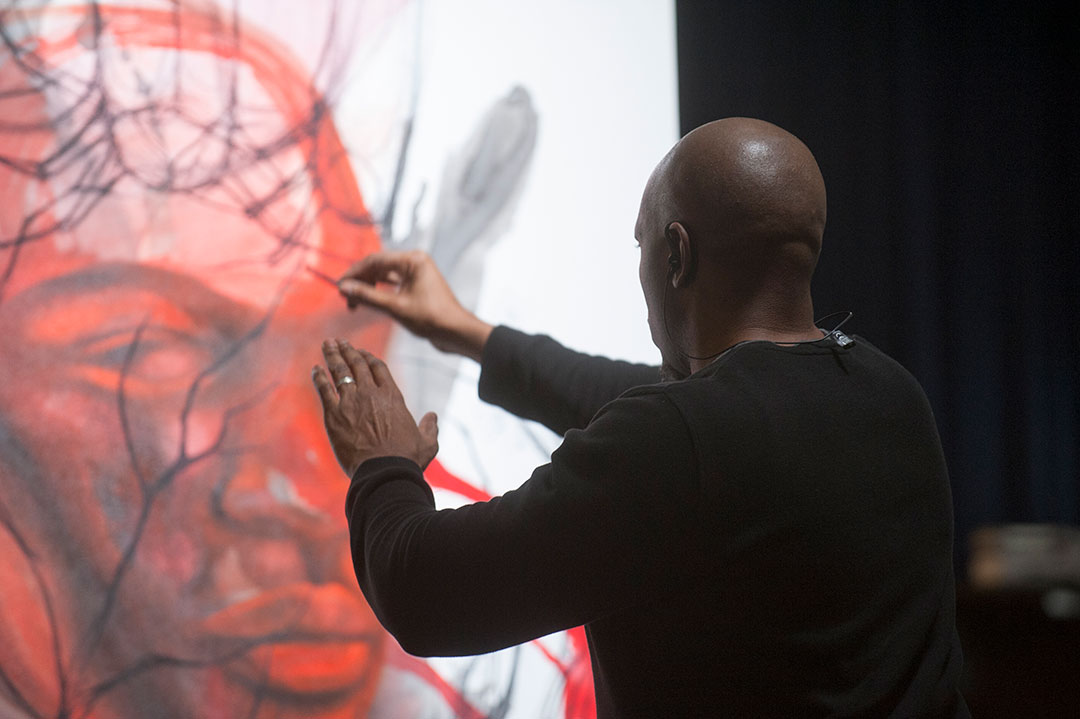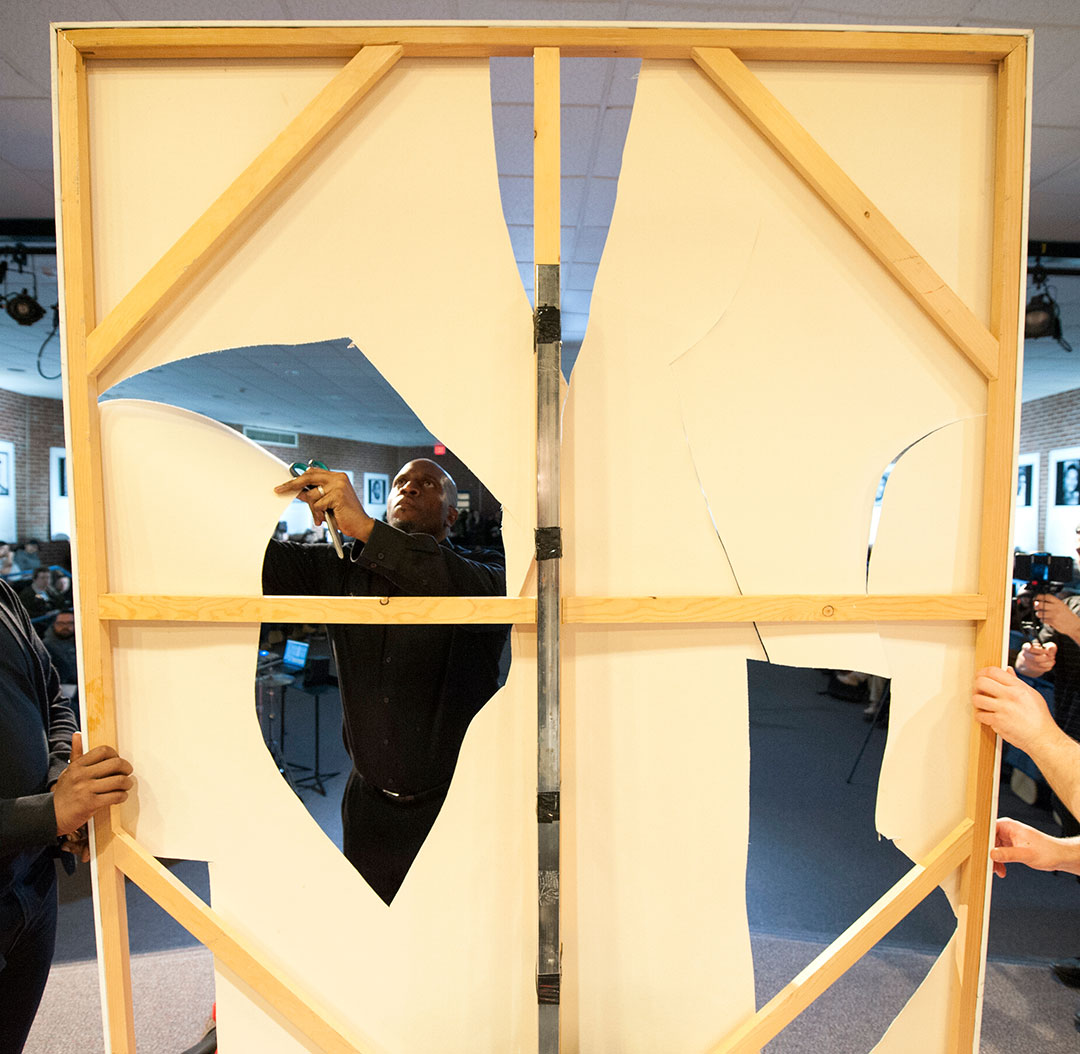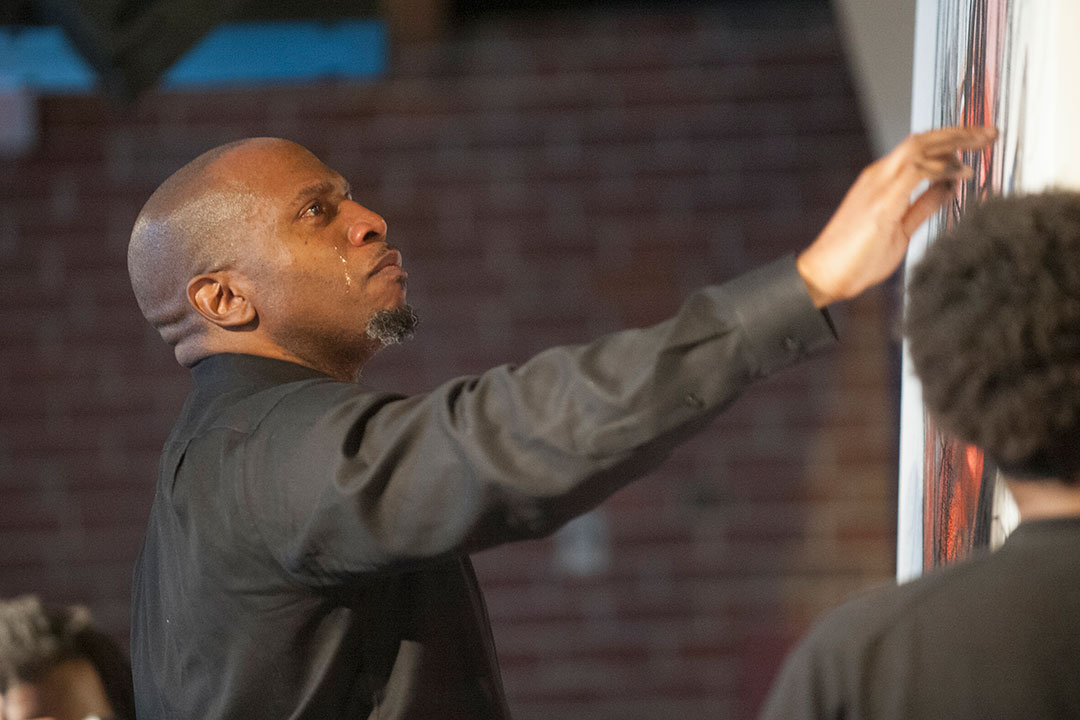We Are Mourning. We Are Hoping.
The end of a 17-hour Live Painting Performance and Installation that I launched at my university in response to an outbreak of racist activity on my campus. The public destruction of the portrait of Trayvon Martin was as important as its creation. Through spectacle, I had to communicate to my mostly-white audience not only the trauma of Trayvon’s murder, but also the seemingly unending trauma of watching the memory of his young short life being decimated my the media and in the court of public opinion.

I posted this collection of thoughts to social media on June 2nd, 2020, immediately following the gruesome murder of George Floyd, who was suffocated to death by Derek Chauvin, a former police officer for the Minneapolis PD, who is now a convicted murderer. In the wake of the widely-circulated video of Mr. Floyd’s public execution, I found myself connecting some of the trauma that I and other black people around me were feeling to that around the murder of Trayvon Martin in 2012.
“September 2017: Racist messages were written on the dorm room doors of black students at my university. When I staged a public art project on campus in response to these racist assaults, a number of people asked me why my project recalled the story of Trayvon Martin, 6 years after his death. I told them that I was still living with the trauma of his case: the details of his murder, the public dragging of his character, the racist memes about him, the politicization of the Zimmerman Trial, and the fact that we all witnessed how a 17-year-old black boy, walking home after buying snacks, who was then stalked and murdered by a stranger, could have his image decimated, his narrative skewed into that of a thuggish weed-head monster who was prowling, lurking, hiding in the bushes to attack anybody at random, perhaps even a friendly neighborhood watchman. I remember how devastated I was when George Zimmerman was exonerated. The trauma of witnessing the incredible progression of his acquittal has never left me. I feel like Trayvon Martin’s tragic story, and the relative silence among my white counterparts (especially those in my church) caused a deep wound in me that has never really healed.
* * *
We black folks walk around with these traumas. We learn to live with them. It’s as though each of us have lived through one significant awful moment when it became painfully clear that our lives don’t really matter. We bow to White Convenience. We surrender to White Conditional love. “Maybe they will see that I really do matter when they are ready to. If I just wait a little longer… Maybe if I behave more like this or that, they will see that I am just like them. Maybe. It is possible…” And often, we black folks have silently decided to exist amid these dueling, toxic realities, while being force-fed putrefied lie- offerings of “Thoughts and Prayers,” garnished with unwanted side orders of anxiety, regret, shame, and genuine rage – so very silently, we exist.
* * *
We literally live with this – daily. Summer 2017 brought us the Charlottesville protests, during which time some of President Trump’s “very fine people” converged on the city armed with Tiki torches and angry whiteness to remind us that the Confederacy was here to stay, and chanting, in their own words: “Jews will not replace us!” Immediately following that tragedy, a member of my own church posted a noose to his Facebook page, in response to the “ANTIFA” and “Black Lives Matter” movements. At best, a meager response followed. Very meager. I truly believe they did what they thought was sufficient, what was best for that moment, to calm things down. The dust settled. They’ve moved on. Like, they seriously have. I’m still carrying this trauma. I’m literally still living with the reverberations of that man’s public statement, about his white rights, and my black neck.
* * *
I’m grateful that so many people are using this moment concerning #GeorgeFloyd and his horrific death to find their voices. Just understand that the black folks around you carry this DAILY. We can’t opt out of this conversation. So, when the protests die down, and the media coverage moves on to the next dumb-ass thing that Trump does in two weeks, black folks will still be hurting, weeping, wondering, praying, lamenting, seething, doubting, and some will be hoping.”


